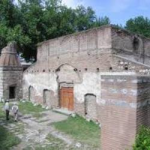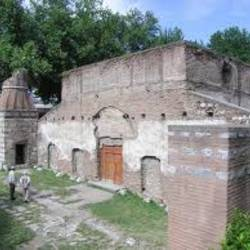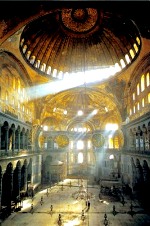
Deprecated: trim(): Passing null to parameter #1 ($string) of type string is deprecated in /home/aoiusa/public_html/wp-content/plugins/sexybookmarks/public.php on line 388
Deprecated: trim(): Passing null to parameter #1 ($string) of type string is deprecated in /home/aoiusa/public_html/wp-content/plugins/sexybookmarks/public.php on line 394
Deprecated: trim(): Passing null to parameter #1 ($string) of type string is deprecated in /home/aoiusa/public_html/wp-content/plugins/sexybookmarks/public.php on line 400
 Source: Vatican Insider
Source: Vatican Insider
Hagia Sophia in Nicea, where the Seventh Ecumenical Council was held in 787, is about to be declared a mosque by the Turkish authorities.
As the Turkish press reports, the call to prayer was sung from the Muezzin last Thursday, for the first time since the founding of the Turkish Republish in 1923. The minaret was added to the church in the city that the Turks called “Iznik” in the Ottoman age. Last year it was restored. With the prayer to be said at the beginning of the Islamic feast of sacrifice on Sunday morning, the former church will be ready for Islamic religious ceremonies.
The decision by the office of the Administrative Council, the competent authority, has sparked fierce debate. Selcuk Mülayim, of the University of Marmara, an art historian, underlined the building’s importance in the history of Christianity and warned that the move would mark the beginning of protests from all over the world.
Iznik’s chamber of commerce criticized the move as lacking any sense, since the small city lives off tourism. Equally controversial is the issue of whether it is the Council’s duty to explain how the former church was changed from a museum into a mosque. The office explained that the building had been marked out by the community “unjustifiably” as a museum, since it had never been used as a museum before. Last year, a sign was posted in front of the restored church building, with “Museum” written on it; a guard made visitors pay for an admission ticket.
In Hagia Sophia, the bishops of the Roman empire gathered in 787 to decide over the Byzantine iconoclastic controversy, and to approve the veneration of icons. Nicea was also the meeting place of the First Ecumenical Council, in the year 325. The palace where the Council took place no longer exists. Hagia Sophia was transformed into a mosque by the Muslims in 1331, when they conquered the city.
After a fire, it was restored by the architect Mimar; it was later destroyed in the battle of Bursa in the Turkish war of independence in 1920. The ruins were restored in 2007 and have attracted Christian religious tourism.

